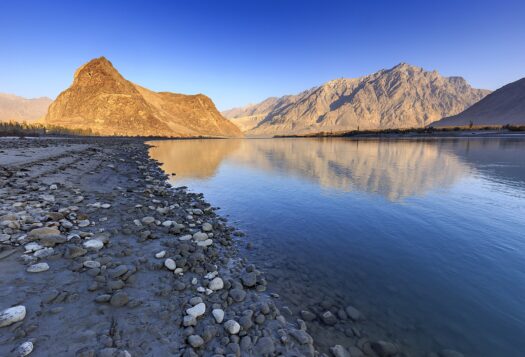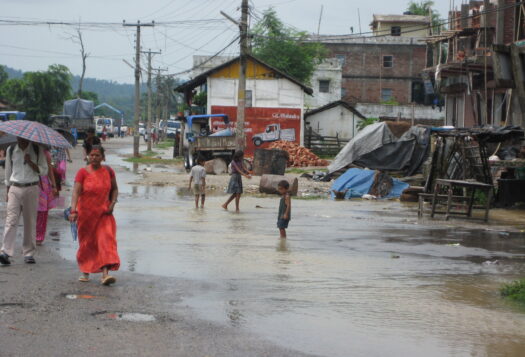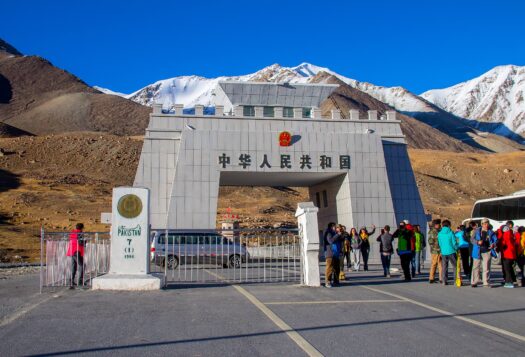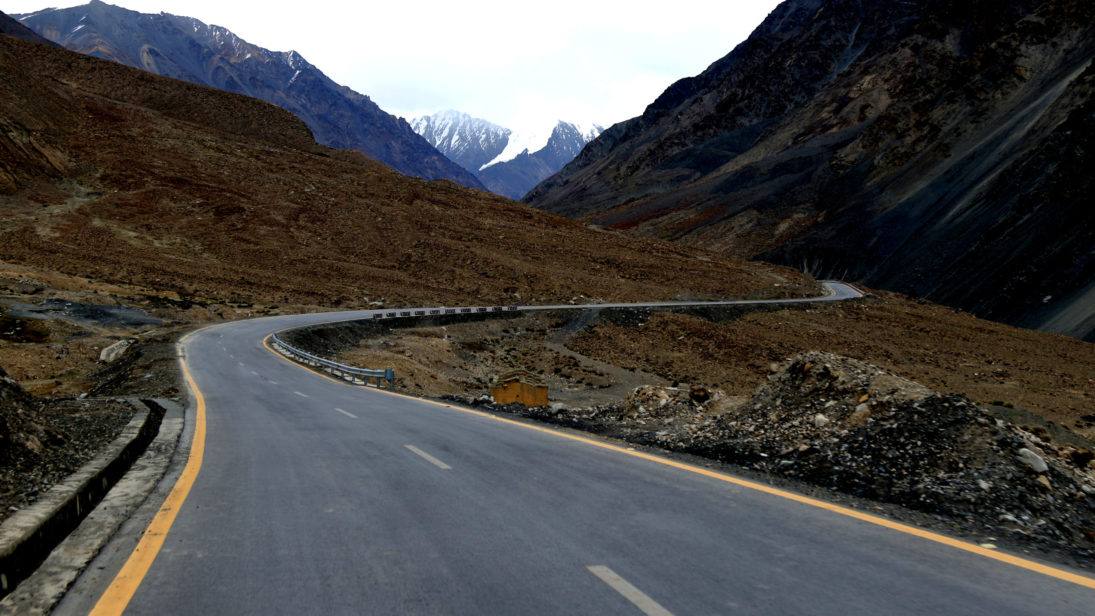
On July 14th, in a story later pulled from the paper, Express Tribune reporter Shahbaz Rana covered the Pakistan government’s proposal for a new range of administrative, financial, and even punitive powers for the China-Pakistan Economic Corridor (CPEC) authority—the administrative body aimed at overseeing the completion of CPEC projects. A couple of weeks before, Pakistan and China had signed deals for CPEC projects worth approximately USD $11 billion, including two hydro-power projects in Pakistan-administered Kashmir and a railway project that is the most costly CPEC project to date.
The recent reporting underscores the steps that the Imran Khan government has taken to revive CPEC—likely due to pressure from China and the growing perception that CPEC has slowed during his time in office. Despite reported frustrations and concerns over project costs and the lack of transparency, CPEC’s revival reflects the extent that the over USD $70 billion economic corridor cannot afford to fail. Even during the upsurge of COVID-19 cases, officials from both sides have claimed CPEC projects not only remained unscathed from the global pandemic but that bilateral cooperation between the two countries increased. However, as the pace of CPEC projects seem to pick up, the flagship project of China’s Belt and Road Initiative (BRI) also appears to be shifting away from the hands of civilian policymakers.
What is the CPEC Authority?
In the past four years officials from both China and Pakistan have repeatedly denied a CPEC slow down. Despite these denials, the mainstream media in Pakistan began gradually reporting on frustrations over CPEC bottlenecks and stalled projects. As a result, one thing became increasingly apartment: CPEC—already facing challenges before Prime Minister Imran Khan’s election—had slowed down further under his government. As the flagship project of China’s Belt and Road Initiative, China was also not pleased with the situation.
The recent reporting underscores the steps that the Imran Khan government has taken to revive CPEC—likely due to pressure from China and the growing perception that CPEC has slowed during his time in office.
Although China had been seen as favoring the Pakistan Muslim League-Nawaz (PML-N) under Nawaz Sharif, tensions over CPEC were not unique to the Imran Khan administration. One of Sharif’s reported disagreements with military leadership was over the control of CPEC. In 2016 there were reports that China was frustrated by a lack of coordination and consensus on CPEC projects and there were talks of creating a “CPEC Development Authority” that would bring the military into a more formal role as a stakeholder overseeing CPEC projects, which Sharif opposed. At that time, a section of Pakistan’s Army had started providing protection for CPEC projects. China was also said to be in favor of having the military more involved in the implementation and monitoring CPEC. While the idea of creating a separate CPEC Authority was in discussions for several years prior, it did not materialize until 2019 under the PTI government.
The CPEC Authority was created at the request of China to better coordinate CPEC projects among stakeholders on the Pakistan and Chinese side. The authority also gave CPEC the guarantee of the most powerful player in Pakistan. Passed in October 2019, the CPEC Authority Ordinance was meant to “ensure a timely completion of CPEC projects” and run by retired general Asim Saleem Bajwa. The CPEC authority was criticized for undermining the role of Pakistan’s parliament as it had been passed through a presidential ordinance, and some suggested that the ordinance effectively shifted control of CPEC projects from the civilian government to the military.
As reported in the Express Tribune in July, the federal government of Pakistan had also proposed giving more powers to the CPEC Authority, notably including the power to “impose penalties, or refer investigation(s) and inquiries to concerned agencies, against such persons, including public office holders, who willfully defy the directions, instructions, or specified orders of the authority.” Although the article was pulled from the paper, the reporter, Shahbaz Rana, stood by his story and it has been under discussion in media circles, so much so the BBC Urdu covered it in detail, substantiating claims of the Tribune’s reporter. However, officials have recently claimed that in the new CPEC Authority Bill some of the previous clauses granting powers to the CPEC Authority to conduct investigations or inquiries were removed.
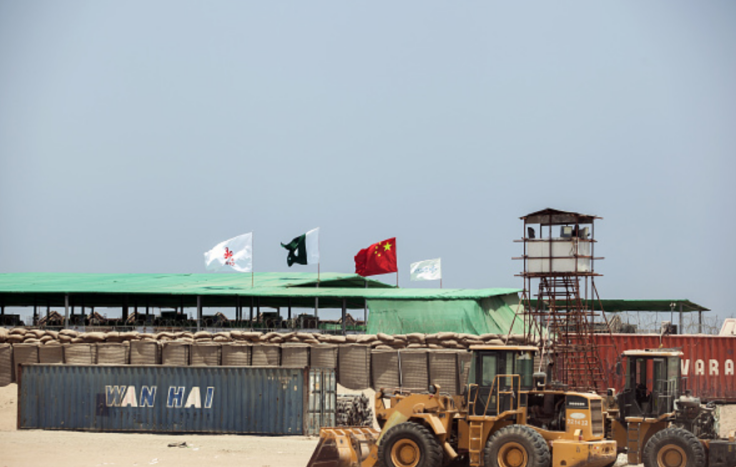
CPEC Phase II: New Projects, Same Challenges?
The most recent sign of CPEC’s revival is the USD $11 billion in deals signed in June and July—as well as Pakistan’s recent approval of the most expensive component of those deals, the revival of its colonial-era train systems. Further, the inauguration of a Special Economic Zone (SEZ) in Faisalabad is a key component of the second phase of CPEC – which is meant to invite investment in areas including manufacturing, science, technology, and agriculture particularly through SEZs. With the signing of the deals, CPEC projects now seem to be “full speed ahead.”
From the onset, however, particularly during the former federal government’s tenure led by Nawaz Sharif, almost everything involving the USD $62 billion in CPEC projects has been kept confidential. Policymakers in Pakistan have also raised demands for greater transparency in CPEC projects. In the past, due to his political rivalry with Nawaz Sharif, Prime Minister Imran Khan pushed for reviewing and revisiting the terms and conditions with the government of China. Still, it is to be noted, there has not been any substantial improvements in transparency surrounding the CPEC project under the PTI administration.
On the question of CPEC, Islamabad has largely stayed on the same page, despite suggestions of Khan’s initial reservations and the CPEC slowdown. As the flagship site of the BRI, completing CPEC is critical for China. This is why it continues to push for it. Even as Imran Khan’s commerce minister suggested a pause on CPEC projects soon after Khan’s election in 2018, Pakistan’s Chief of Army Staff commented less than two weeks after that CPEC was “destined to succeed despite all odds.” Independent observers have argued that Pakistan cannot afford the ire of Beijing in the long run, no matter its objections, given its dependence on China.
As the standoff takes place on one disputed border and India remains focused on boundary tensions with China, China-Pakistan have signed deals for hydro-power projects in the Pakistan administered Kashmir region, which has been met with objections from India.
CPEC and Regional Stability
With or without the approval of civilian governments in Islamabad, Beijing seems resolute on CPEC proceeding. Even as the implementation of CPEC projects seems slow moving, the fact that China and Pakistan are intent on moving forward has important implications for regional stability. Border tensions between India and China in Ladakh and may have given new impetus to CPEC projects. For Islamabad, the India-China standoff at Ladakh has become a chance to press the advantage with, among other things, CPEC. As the standoff takes place on one disputed border and India remains focused on tensions with China, China-Pakistan have signed deals for hydro-power projects in the Pakistan-administered Kashmir region, which has been met with objections from India.
The recent news including granting greater power to the CPEC authority, and revival of projects that have an economic as well as a strategic angle, suggest that as the pace of CPEC picks up, projects are increasingly leaving the hands of civilians. As of now, CPEC projects have been revived in the country and is expected to increase in the coming years, despite domestic oppositions, as CPEC enters its second phase. Nevertheless, this begs the questions: how much control will civilians have over it with pace of the projects? Over the years, somehow, both China and Pakistan have managed to bring CPEC back to life. At the same time, it will continue to play a greater part in Pakistan’s domestic and foreign relations along as the pace of work on CPEC related projects seems to pick up once again.
***
Click here to read this article in Urdu.
Image 1: via Wikimedia Commons
